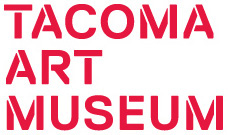Louis Bunce
As an artist, Louis Bunce was a chameleon, always open to new styles and techniques.
He began his art training at the Museum Art School at the Portland Art Museum (now the Pacific Northwest College of Art) then in 1927 went to New York to attend the Art Students League. It was during this time that he established his lifelong connections to the New York art scene including friends such as Jackson Pollock (1912–1956) and the sculptor David Smith (1906–1965). Starting in 1939, Bunce worked for the Works Progress Administration’s Federal Art Project as a painter before returning to Oregon to teach at the Salem Art Center and create murals for several Oregon post offices among other projects.
Bunce relocated to Portland in the early 1940s and after World War II, became a faculty member at the Museum Art School where he taught for almost 30 years, influencing generations of students. Over the course of his career, Bunce created a prolific and varied body of work constantly experimenting with new ideas. He also is credited with introducing the serigraph printmaking technique to Oregon.
Bunce became an instructor at the Museum Art School in 1946and taught there until 1972. During that time he also ran an influential gallery in Portland, the Kharouba Gallery that represented a number of important Oregon artists including William Givler, Charles Heaney, Jack McClarty, George Johanson, and C.S. Price.
Bunce received a major commission at Portland Airport in late 1950s and was a Ford Foundation Fellow in 1961. During his lifetime he participated in exhibitions at the The Museum of Modern Art, New York, the Metropolitan Museum of Art, the Whitney Museum of American Art and numerous regional exhibitions.
























